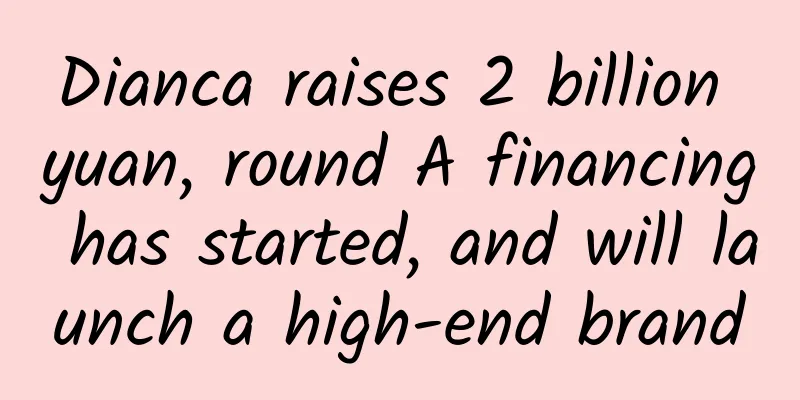Chinese cartoons look like national treasures? There are so many "cultural relics" hidden in "Nezha 2"...

|
The domestic animated film "Nezha: The Devil Boy Conquers the Dragon King" (hereinafter referred to as "Nezha 2") has been unstoppable and set many records. Many of the cultural relics that look similar to it have left a deep impression on the audience. The prototype of the colorful lotus is the inlaid gold-copper Boshan furnace The colorful lotus is the magic weapon that highlights the film "Nezha 2". Nezha and Ao Bing were able to reshape their bodies thanks to its powerful magic. Its petals are stacked up layer by layer, and the prototype of its shape is the inlaid gold-copper Boshan furnace. The inlaid gold-copper Boshan furnace was unearthed from the tomb of Liu Sheng, the King of Zhongshan in the Western Han Dynasty. It is now in the Hebei Museum and is one of the museum's treasures. It was designated as a national treasure in 1993. This cultural relic is a bronze ware used for incense in the Western Han Dynasty. It is named Boshan furnace because its shape is similar to the legendary Boshan Mountain on the sea, namely the three mountains of Penglai, Fangzhang and Yingzhou in the East China Sea. The inlaid gold copper Boshan furnace is a uniquely designed art treasure that combines practicality and aesthetics. Its overall shape is like a mountain, and it is cleverly composed of three parts: the furnace base, the furnace plate and the furnace cover. The furnace base and the furnace plate are precisely riveted together with iron nails, and the furnace plate and the furnace cover can be opened and closed freely, which is convenient for placing and taking out aromatic materials. When the spices burn in the furnace, the light smoke slowly rises through the holes on the furnace cover, and the smoke is lingering, like a fairyland. Whether in shape or function, this cultural relic contains the ancient people's infinite yearning and pursuit for the fairyland. The shape of the barrier beast is integrated from the Sanxingdui cultural relics In the film, the two funny and humorous barrier beasts have exaggerated thick eyebrows, bulbous noses and curly noses. Their images are a combination of the classic shapes of unearthed cultural relics such as the bronze human head with a gold mask, the large bronze mask and the bronze eagle-shaped bell from Sanxingdui. In 1986, archaeologists discovered a bronze human head wearing a gold mask in the Sanxingdui ruins. The thickness of the gold foil was 0.2 mm, and its face was decorated with a large gold mask, which showed its unique beauty and special cultural connotation. Also unearthed was a bronze eagle-shaped bell, the bell tongue and the bell body were connected by a curled nose-shaped component. This special casting technique that breaks the convention is very characteristic of Sanxingdui. The film combines the characteristics of classic cultural relics with the image of mythical beasts, which is not only vivid and exaggerated, but also makes the ancient bronze civilization glow with vitality in the present. Yuxu Palace uses the "Auspicious Crane Picture" as a template The Yuxu Palace, a major place of the Chanjiao Immortal Sect, is surrounded by clouds and mist. Its panoramic design and composition are based on the famous painting "Auspicious Crane" by Emperor Huizong of Song Dynasty, which is stunningly beautiful. The internal structure of the palace is inspired by the Jin Temple in Taiyuan City, Shanxi Province. The chiwen on both sides of the palace roof are dragon-headed and fish-tailed mythical beasts, which are typical decorations on ancient buildings. The prototype is taken from the architectural components of the Tang Zhaoling Mausoleum, which is integrated with the texture of bronze. Song Huizong's "Auspicious Cranes" is now in the Liaoning Provincial Museum. In the painting, 20 white cranes fly around the Xuande Gate in Bianliang in 17 different postures. The inscription records that this was an auspicious event on the 16th day of the first lunar month in the second year of Zhenghe (1112). As the "handsome dad" in the film, Ao Guang attracted the audience's attention as soon as he appeared. His broadsword is even more eye-catching. The broadsword is called "Dragon Tooth Sword", which combines two different weapon elements: the first half refers to the bronze sword of the Shang Dynasty, with the tip of the sword raised, the back of the sword attached with teeth, and the belly of the sword slightly contracted; the second half adopts the dragon swallowing mouth, which is the most common shape on Guandao, and it was popular from the Tang Dynasty to the Ming Dynasty. The most unforgettable character in the film is Lady Yin, who is heroic and loving. The sword she uses is quite similar to the Sword of Goujian, King of Yue, unearthed at Wangshan No. 1 in Jingzhou District, Jingzhou City, Hubei Province. The most unexpected thing in the movie is that the kind-hearted Wuliang Xianweng is actually the biggest "villain". The images of Wuliang Xianweng and his apprentice Hetong are based on the Ming Dynasty silver gilt Fu Lu Shou in Suzhou Museum. The adorable Taiyi Zhenren is loved by countless audiences. His lotus throne is an imitation of the Ming Xuande bronze gilt Vajrasattva seated statue, which is a Buddhist statue from the Ming and Qing Dynasties. Bronze decorations hidden in the film In addition to the obvious cultural relics mentioned above, there are many cultural relics elements hidden in the film. For example, a large number of patterns are evolved based on the bronze decorations of the Shang and Zhou dynasties, such as Taotie patterns, Panchi patterns, dragon patterns, water patterns, cloud and thunder patterns, etc. Taotie patterns, also known as animal face patterns, are common patterns on bronze ware. They emphasize abstract images of animal faces, which are ferocious and prevalent in prehistoric times, the Shang Dynasty, and the Western Zhou Dynasty. In the movie, the patterns on the armor worn by Li Jing and Lady Yin are largely based on Taotie patterns, and the arcs connected to the breastplates are also based on the horn shapes in the animal face decorations on bronze tripods. In addition, the various forms of the Tianyuan Ding large tripods all have the decorative features of the Shang Dynasty bronze tripods, and the arc-shaped patterns on the large tripods are also Taotie patterns. The coiled dragon pattern is a common bronze decoration from the late Western Zhou Dynasty to the middle of the Spring and Autumn Period. It is an image of a hornless snake that is twisted, entwined, and coiled. The footprints left by the young Nezha on the wall of Chentangguan Pass each have a pattern that matches the coiled dragon pattern on bronze artifacts from the Western Zhou Dynasty. This four-sided continuous animal decoration shows the continuity of ancient bronze culture. The dragon pattern is a kind of animal head and snake body decoration. The head is similar to that of a crocodile, with a big mouth and horns on the head. The body is similar to that of a snake and is curved in a geometric shape. The body is decorated with spiral patterns and is continuous in two sides. The Tianyuan Ding small tripod borrows the ritual characteristics of the dragon-patterned flat-footed tripod from the Shang Dynasty. Water patterns, with the soft lines of water as decorative curves, are divided into water vortex patterns, swastika curved water patterns, lotus flowing water patterns, etc. In the Shang and Zhou dynasties, water patterns on bronze wares were decorated with single patterns or background patterns, and the pattern styles decreased, and cloud-thunder patterns and ring-belt patterns were derived. Ao Bing, a handsome young man in the film, is well-behaved and sensible. He wears a white robe, and the edge of his clothes is decorated with swirling and elegant cloud-thunder patterns and undulating water patterns. These patterns just fit his identity as the son of the Dragon King of the East China Sea. In addition, the film also features patterns such as crane and lotus that reflect traditional culture. One film, thousands of treasures, the splendor of a great country, and cultural relics are displayed. "Nezha 2" is simply a cultural relic promotional film! (The author Yang Shugang is a researcher at the Henan Provincial Institute of Cultural Relics and Archaeology) |
<<: Why should we start with farming to protect these "leopards"?
>>: Spring thunder brings heavy rain! Please check out the diet guide for Jingzhe →
Recommend
According to the quantum tunneling effect, if someone always wants to pass through a wall, what is the probability of success?
This article is based on answering a question fro...
Seven types of people are most attractive to mosquitoes in summer. Check these points and see if you are "infected"?
Copyrighted images from the gallery, unauthorized...
Should we cut advertising budgets during the epidemic? Shouldn’t!
Some time ago, I wrote an article titled "Wh...
Li Pi's "The Fifth Session of Douyin Short Video Sales Training Camp" Listen and do as you are told to ensure orders
Introduction to the training course content: No re...
How can businesses let customers see their mini programs? How to promote mini programs?
Q: How can merchants let customers see their mini...
The stock market is falling. Are you, a startup, ready for the winter?
[[146861]] As global stock markets tumble, shareh...
App promotion plan: free channels and paid channels!
In the initial stage of a startup team, how shoul...
One of the hardiest plants on Earth, this moss could be the key to future Mars colonization
Tuchong Creative In the grand blueprint of human ...
Is the “hydrogen balloon” filled with hydrogen or helium?
When I think back to my childhood, I can’t help b...
Beijing autonomous driving road test report released: Baidu Apollo, the leading player in China and abroad, accounts for 91% of the total mileage
On April 1, the "Beijing Autonomous Driving ...
China's first autonomous driving platoon road test group standard approved, KargoBot takes the lead in compiling
Recently, Didi's self-driving freight KargoBo...
"Crackling" is the sound of the New Year, but can we set off fireworks during the Spring Festival?
...
Finally cool? Autumn heat: I don't exist? Please beware of this wave of "residual heat" →
The dog days are over, and it seems that there is...
Are you still using Python 2? You’re about to be eliminated!
[[132505]] Python 2.7 will end support in 2020, a...









